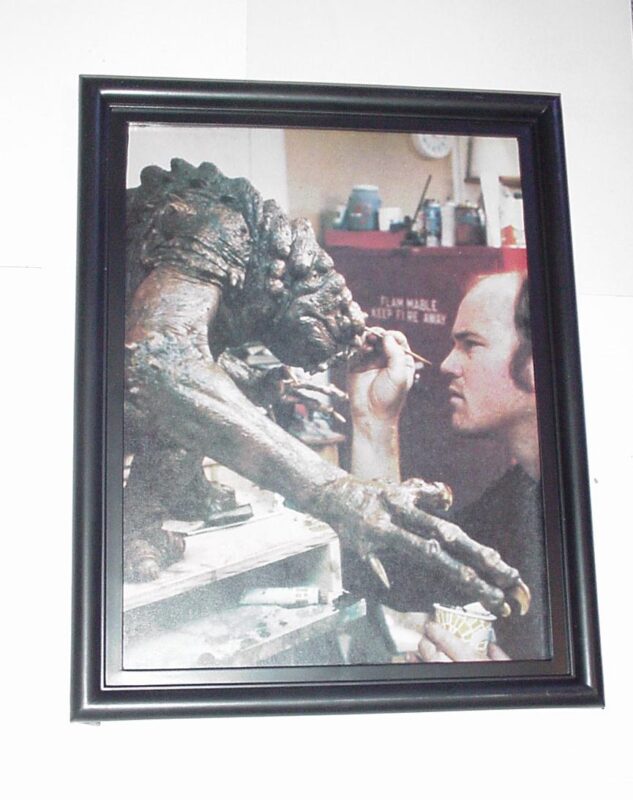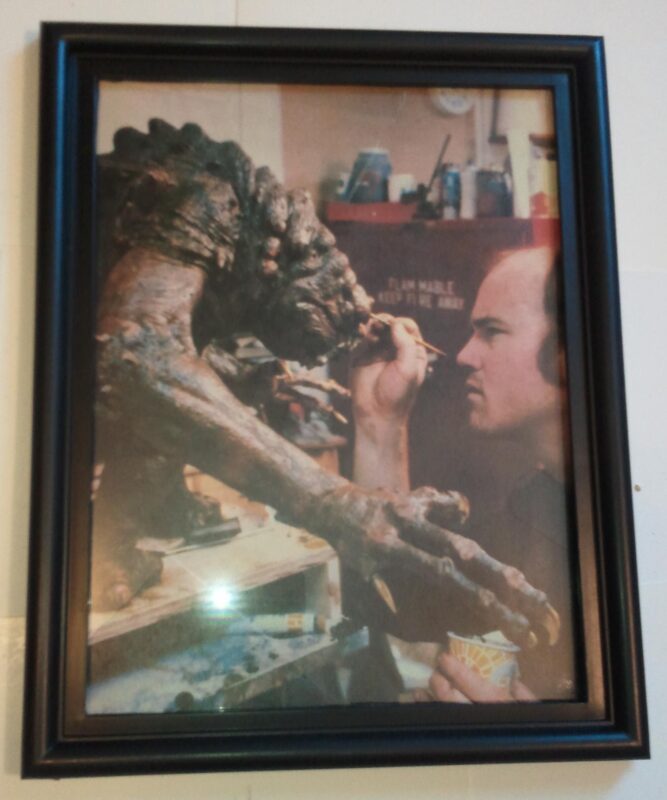Description
Phil Tippett adds minor touch-ups to the Rancor rod puppet. At the 56th Academy Awards in 1984, Richard Edlund, Dennis Muren, Ken Ralston, and Phil Tippett received the “Special Achievement Award for Visual Effects.” Tippett and Stuart Freeborn were also nominated for “Best Makeup”. Phil Tippett (born 1951) is a movie director and an award-winning visual effects supervisor and producer, who specializes in creature design and character animation. The Rancor is an immense, warm-blooded predator native to Dathomir, Lehon, and Felucia; but first seen in Return of the Jedi wherein Luke Skywalker is attacked by one at the behest of Jabba the Hutt. The concept idea for the rancor in Return of the Jedi was described by its creators as “a cross between a bear and a potato.” It was first to be played by an actor in a suit, but no one was satisfied with the results. The rancor was then made as a rod-operated puppet, filmed with a high-speed camera to slow its movements down to give the illusion of a much larger creature. A combination of matte painting, cartoon rotoscoping, and CG elements were added around the creation to make it look bigger and more menacing. Some of these changes were later omitted or replaced with CG effects in the 2004 DVD release of the original trilogy. During the Rancor scene, when we get a full frontal shot of the beast as Luke tries to find a way out, you can see the puppeteer’s blue-clothed arm operating the Rancor on its left side (right for the viewer). It isn’t that easily noticeable, since it is dark like the surroundings, but its color makes it stand out. “I like the idea that everyone loves someone. And even the worst, most horrible monster you can imagine was loved by his keeper. And the rancor probably loved his keeper.”?George Lucas. Star Wars Episode VI: Return of the Jedi is a 1983 American epic science fiction film directed by Richard Marquand and written by George Lucas and Lawrence Kasdan, with Lucas as executive producer. It is the third film released in the Star Wars franchise and the first film to use THX technology. The film is set approximately one year after Star Wars Episode V: The Empire Strikes Back and was produced by Howard Kazanjian and Lucasfilm Ltd. The evil Galactic Empire, under the direction of the ruthless Emperor Palpatine, is constructing a second Death Star in order to crush the Rebel Alliance. Since Palpatine plans to personally oversee the final stages of its construction, the Rebel Fleet launches a full-scale attack on the Death Star in order to prevent its completion and kill Palpatine, effectively bringing an end to the Empire. Meanwhile, Luke Skywalker, a Rebel leader and Jedi Apprentice, struggles to bring Darth Vader, who is his father Anakin and himself a fallen Jedi, back from the Dark Side of the Force. A sequel, Star Wars Episode VII, was announced on October 30, 2012 and is planned for a 2015 release. Tippett co-developed the animation technique called go motion to animate the sinister AT-AT Imperial Walkers and the hybrid alien tauntauns. In 1981 Tippett continued using go motion for Dragonslayer, and received his first Academy Award nomination for the extraordinarily realistic dragon animation. By 1983, Tippett led the famed Lucasfilm creature shop for Return of the Jedi for which he was awarded his first Oscar in 1984. In 1984 Tippett Studio was born when Phil left ILM and set up a studio in his garage to create a 10-minute experimental film called Prehistoric Beast. The realism of the dinosaurs it depicted and the film’s reflection of contemporary scientific theory led to the 1985 CBS animated documentary Dinosaur! Tippett Studio won its first award, an Emmy for Special Visual Effects, for the animated dinosaur sequences. In 1986 producer Jon Davison hired Tippett to create the animated robot sequences for RoboCop. The ED-209 stop motion model was designed by Craig Davies, who also built the full size models, and animated by Tippett. As one of the setpieces of the movie, the ED-209’s look and animated sequences were under the close supervision of director Paul Verhoeven, who sometimes acted out the robot’s movements himself. ED 209 was voiced by producer Jon Davison. This project became the start of a long and successful collaboration between Davies and Tippet. He also modeled the Dark Overlord creatures seen in Howard the Duck. In 1991, Phil was hired to create the dinosaur effects for the Steven Spielberg blockbuster Jurassic Park using his go motion technique made famous in the film Dragonslayer. However, Dennis Muren and his CGI team at Industrial Light & Magic created animated test footage of a T-Rex that Spielberg loved. When Tippett was told that Jurassic Park dinosaurs would be computer-generated, he was shocked, exclaiming “I’ve just become extinct” (a line Spielberg borrows and uses in the movie). Far from being extinct, Tippett evolved as stop motion animation gave way to Computer-generated imagery or CGI, and because of Phil’s background and understanding of animal movement and behavior, Spielberg kept Tippett on to supervise the animation on 50 dinosaur shots for Jurassic Park. Phil supervised both the Tippett Studio and ILM animators, resulting in realistic digital dinosaurs that breathe, flex, twitch and react. His effort earned him a second Oscar. Work done on Jurassic Park resulted in the development by Tippett Studio’s Craig Hayes of the DID (Digital Input Device) which was pivotal in the transition from stop motion to computer generated animation in bringing creatures to life. In 1995, Tippett Studio was hired to create the giant, hostile alien arachnids in Paul Verhoeven’s adaptation of Robert A. Heinlein’s classic science fiction novel Starship Troopers. Tippett marshaled a team of 100 animators, model makers, computer artists and technicians and expanded his all-CGI facility. Because of the intensity of his involvement, and his ability to pre-visualize the hoards of teeming arachnids, Verhoeven has credited Phil with co-directing the large-scale battle sequences for the film. The excellence of this work resulted in Tippett’s sixth nomination in 1997 for an Academy Award. During 1997–98, Phil supervised animation and effects for Universal’s Virus and Disney’s My Favorite Martian. In 1998–99 he and Craig Hayes co-supervised the visual effects on Jan De Bont’s, The Haunting, for DreamWorks. Under Phil and Craig’s lead, Tippett Studio created over 100 complex effects shots that expressed the horrific character of the house and the spirits that live there. In 2000, Phil joined director Ivan Reitman as the visual effects supervisor on the DreamWorks science fiction comedy, Evolution. In just under a year, Tippett Studio designed, realized and animated over 17 extraterrestrial creatures in 175 shots. Throughout 2001 and into 2002, Tippett changed direction to focus on developing and directing his own movie. Tippett achieved this with Starship Troopers 2, by partnering with his longtime associates, writer Ed Neumeier and producer Jon Davison, with whom he worked on the original Starship Troopers and Robocop. In 1990, Tippett began work on an independent project entitled “Mad God” but during the rise of his studio, the project was dropped. in 2010 though, “Mad God” was brought back up but Tippett did not have the budget for the film. He started a Kickstarter page to make the funds with the needed budget goal of $40,000. On June 16, 2012, the project was successfully funded after exceeding the goal and making $124,156. The first chapter is expected in Dec 2013, with the project ending when Tippett dies (according to the page). The website for the film is online and shows information on the project.
Frame is shrinkwrapped until time of purchase. Ships boxed with packing peanuts.
THE PERFECT GIFT!
Related products
-
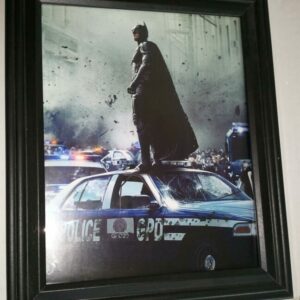
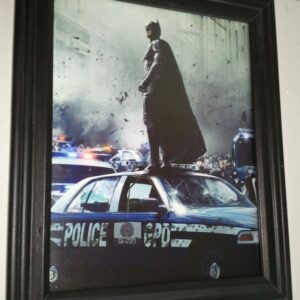
Batman Pin-up #123 FRAMED Christian Bale Police Car Dark Knight Rises Movie The
$99.99 Add to cart -

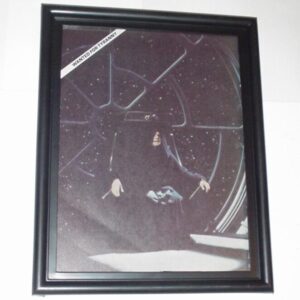
Star Wars Pin-up #24 FRAMED Emperor Palpatine Return of the Jedi
$44.99 Add to cart -
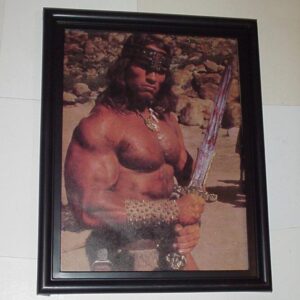
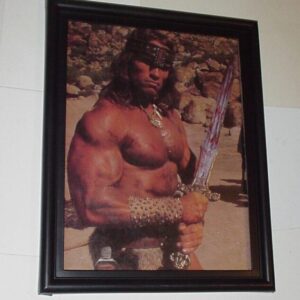
Conan Pin-up # 2 FRAMED Arnold Schwarzenegger Bloody Sword
$44.99 Add to cart -
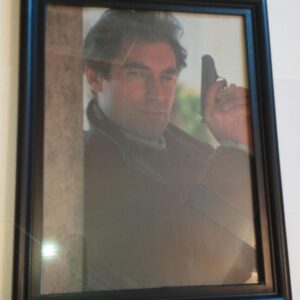
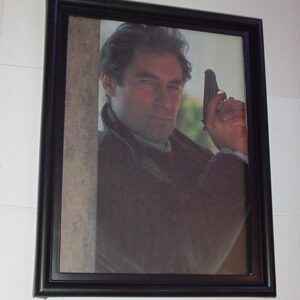
James Bond 007 Pin-up # 8 FRAMED Timothy Dalton
$44.99 Add to cart
